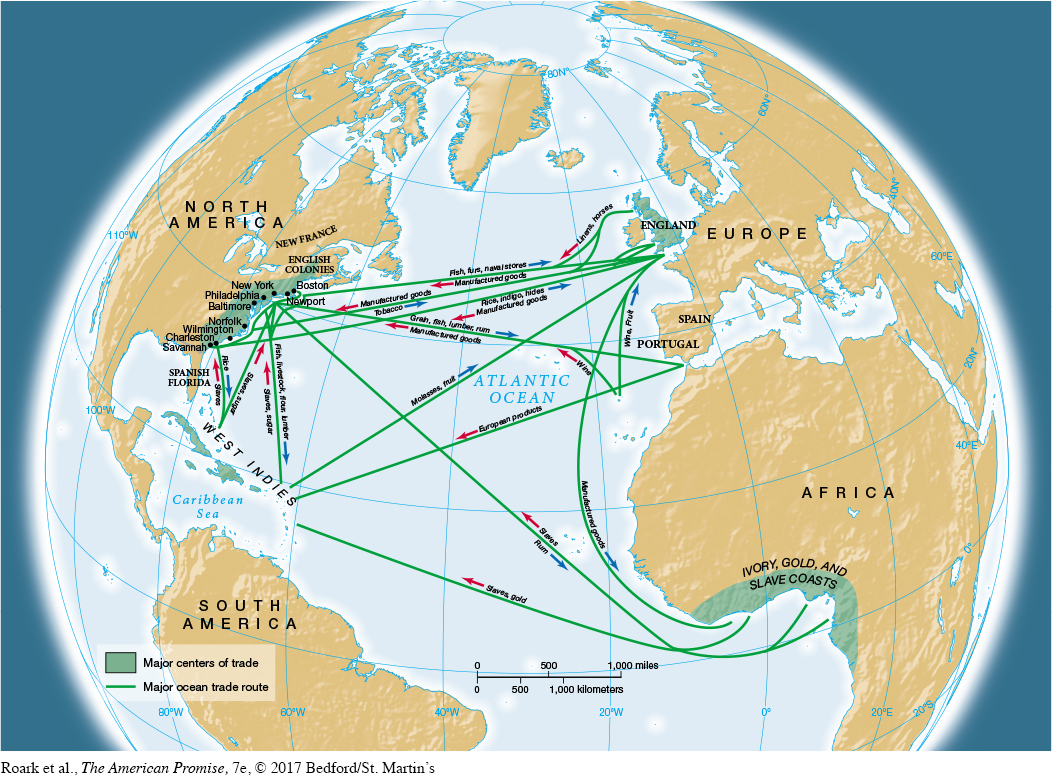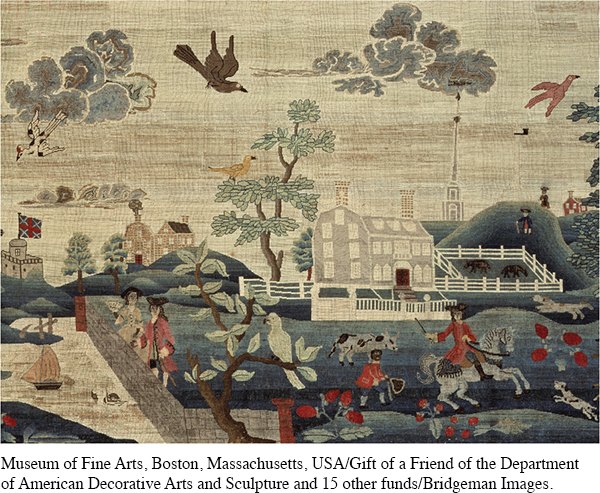The American Promise: Printed Page 110
The American Promise, Value Edition: Printed Page 102
The American Promise: A Concise History: Printed Page 117
Farms, Fish, and Atlantic Trade
The American Promise: Printed Page 110
The American Promise, Value Edition: Printed Page 102
The American Promise: A Concise History: Printed Page 117
Page 110A New England farm was a place to get by, not to get rich. New England farmers grew food for their families, but their fields did not produce huge marketable surpluses. Instead of one big crop, a farmer grew many small ones. If farmers had extra, they sold to or traded with neighbors. Poor roads made travel difficult, time-
The American Promise: Printed Page 110
The American Promise, Value Edition: Printed Page 102
The American Promise: A Concise History: Printed Page 117
Page 111As consumers, New England farmers participated in a diversified commercial economy that linked remote farms to markets throughout the Atlantic world. Merchants large and small stocked imported goods—
The American Promise: Printed Page 110
The American Promise, Value Edition: Printed Page 102
The American Promise: A Concise History: Printed Page 117
Page 112Fish accounted for more than a third of New England’s eighteenth-

Merchants dominated Atlantic commerce. The largest and most successful New England merchants lived in Boston at the hub of trade between local folk and the international market. The magnificence of a wealthy Boston merchant’s home stunned John Adams, who termed it a house that seemed fit “for a noble Man, a Prince.” Such luxurious Boston homes contrasted with the modest dwellings of Adams and other New Englanders, a measure of the polarization of wealth that developed in Boston and other seaports during the eighteenth century.
The American Promise: Printed Page 110
The American Promise, Value Edition: Printed Page 102
The American Promise: A Concise History: Printed Page 117
Page 113By 1770, the richest 5 percent of Bostonians owned about half the city’s wealth; the poorest two-
New England was more homogeneously English than any other colonial region. People of African ancestry (almost all of them slaves) numbered more than fifteen thousand by 1770, but they barely diversified the region’s 97 percent white majority. Most New Englanders had little use for slaves on their family farms. Instead, the few slaves concentrated in towns, especially Boston, where most of them worked as domestic servants and laborers.

By 1770, the population, wealth, and commercial activity of New England differed from what they had been in 1700. Ministers still enjoyed high status, but Yankee traders had replaced Puritan saints as the symbolic New Englanders. Atlantic commerce competed with religious convictions in ordering New Englanders’ daily lives.
REVIEW Why did settlement patterns in New England change from the seventeenth to the eighteenth century?